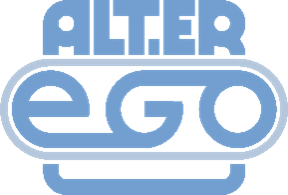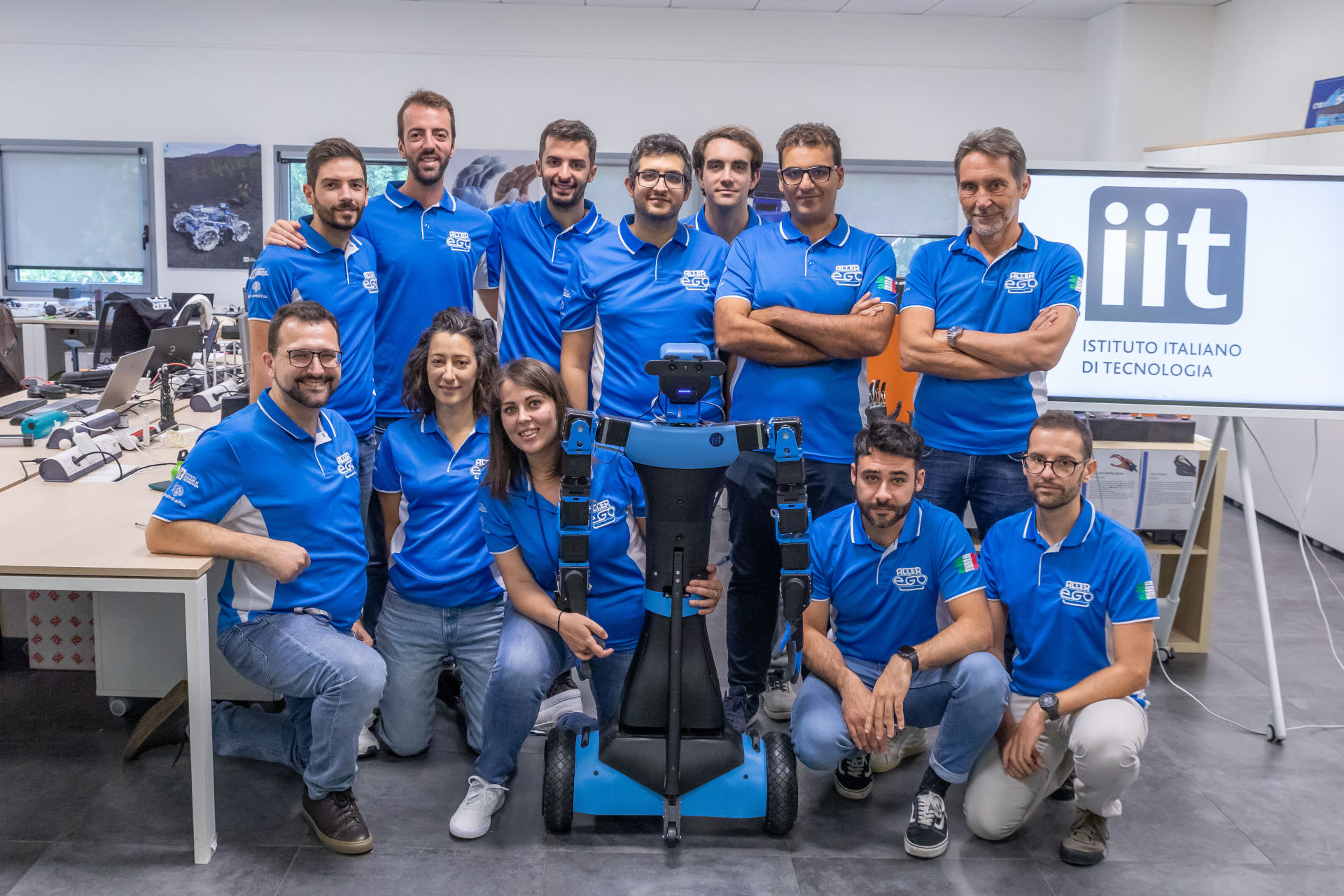The Avatar
AlterEgo is a collaborative, modular lightweight robot with a humanoid upper body and a wheel-based mobile platform, designed for safe and effective interaction. It has 6-DoF robotic arms and soft hands. These have anthropomorphic shape and kinematics and feature synergetic nature-inspired motions to yield intuitive and proficient operation. Thanks to its elasticity, AlterEgo adapts both to heavy duties and delicate tasks. The avatar stands on 2 wheels, as an inverted pendulum: this minimizes its footprint and yields agile navigation in narrow spaces. AlterEgo is equipped with a stereoscopic vision system and a multidirectional microphone array and speaker system to enable bidirectional communication and situational awareness. An active robotic neck supports the avatar’s head following the pilot’s head. The hands integrate IMUs to measure the hand configuration and dynamic interaction to render it to the pilot through haptic interfaces and augmented reality.
Real World Applications
AlterEgo can closely replicate the movements and dynamics of the operator. This endows the robot with the human-like capability of regulating the interaction with the environment. It can effectively replace human presence in several situations, including operation in dangerous or hazardous environments (e.g. nuclear waste decommissioning), disaster response (e.g. nuclear disaster, earthquake, floods), healthcare and remote caregiving (e.g. nursing, elderly assistance, family care), and expert technical interventions (e.g. industrial maintenance).
Team Composition of the ANA AVATAR XPRIZE
The team is a joint venture among two research institutions: Istituto Italiano di Tecnologia and University of Pisa. Istituto Italiano di Tecnologia contributes its longstanding experience in soft robotics, humanoid design and control, manipulation, teleoperation, and shared-autonomy control. University of Pisa brings long standing experience in wearable technologies and sensory feedback techniques. The team is led by Manuel G. Catalano, PhD, researcher in the IIT SoftBots research Line, and counts 10 Engineers, 5 PhD Students and 5 Senior Researchers, from IIT SoftBots, IIT HRI, IIT HHCM and University of Pisa’s Robotics Research Center “E. Piaggio”



